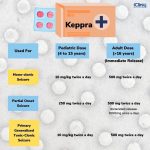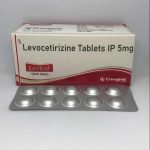
Contents
Levaquin vs. Zosyn
Levaquin is an antibiotic used to treat bacterial infections of the sinuses, skin, lungs, ears, airways, bones, and joints; urinary infections; prostatitis; infectious diarrhea caused by E. coli, Campylobacter jejuni, and Shigella; obstetric infections, including mastitis (infection of the breast); inhalational anthrax exposure; and to prevent and treat plague caused by Yersinia pestis. Levaquin stops bacteria from reproducing and repairing their DNA. It belongs to a class of antibiotics called fluoroquinolones along with Cipro, Noroxin, Floxin, Trovan, and Maxaquin.
Zosyn is a combination of two antibiotics prescribed to treat bacterial infections such as pneumonia, appendicitis, pelvic inflammatory disease, E. coli cellulitis, and postpartum endometriosis. Piperacillin is an extended-spectrum penicillin antibiotic that can be destroyed by an enzyme produced by bacteria called beta lactamase. Tazobactam inhibits beta lactamase and enhances the activity of piperacillin in eradicating bacterial infections.
QUESTION
What are the side effects of Levaquin and Zosyn?
Levaquin
Serious side effects and warnings include:
- Levofloxacin, like other fluoroquinolones, has been associated with tendinitis and tendon rupture.
- Fluoroquinolones can worsen muscle weakness in individuals with myasthenia gravis.
The most frequently reported side effects are:
Less common side effects include:
Rare allergic reactions have been described.
What are the serious side effects of levofloxacin?
Possible serious side effects of levofloxacin include:
- Peripheral neuropathy
- Central nervous system effects
- Hypoglycemia
- Hyperglycemia
- Clostridium difficile-associated diarrhea
- Abnormal heartbeats
- Liver dysfunction
- Sun sensitivity
Other serious side effects of levofloxacin include:
- Levofloxacin should be used with caution in patients with central nervous system diseases such as seizures.
- Levofloxacin should be avoided in children and adolescents.
- Many antibiotics, including levofloxacin, can alter the normal bacteria in the colon and encourage overgrowth of a bacterium responsible for inflammation of the colon.
- Patients taking Levofloxacin can develop sensitivity of the skin to direct sunlight and should avoid exposure.
- Fluoroquinolones worsen low blood glucose levels when combined with sulfonylureas.
- Because of serious side effects, fluoroquinolones should not be used for treating uncomplicated urinary tract infections, acute bacterial exacerbation of chronic bronchitis or acute bacterial sinusitis.
Zosyn
Common side effects associated with piperacillin/tazobactam include:
- diarrhea
- headache
- constipation
- nausea
- difficulty sleeping
- rash
- vomiting
- upset stomach
- itching
- stool changes
- fever
- agitation
- Candida (oral or genital yeast infection)
- high blood pressure
- dizziness
- stomach pain
- chest pain
- edema
- anxiety
- rhinitis
- shortness of breath
Rare side effects occurring with a frequency of less than 1% are:
- agranulocytosis
- hypersensitivity type reactions
- anemia
- canker sores
- atrial fibrillation
- bradycardia
- cardiac arrest
- cardiac arrhythmia
- heart failure
- Clostridium difficile-associated diarrhea
What is the dosage of Levaquin vs. Zosyn?
Levaquin
- The usual dose is 250-750 mg once daily for 3-14 days depending on the infection.
- Anthrax is treated with 500 mg daily for 60 days.
- Take oral formulations at least 2 hours before or after any antacid or mineral supplement since these bind Levaquin and prevent its absorption.
Zosyn
The usual total daily dose of piperacillin/tazobactam for adults is 3.375 g every six hours totaling 13.5 g (12.0 g piperacillin/1.5 g tazobactam). The usual duration of treatment is from 7 to 10 days.
What drugs interact with Levaquin and Zosyn?
Levaquin
- Iron, calcium, zinc, or magnesium can attach to levofloxacin and other fluoroquinolones and prevent their absorption. Therefore, products that contain these minerals should be taken at least 2 hours before or after levofloxacin. Other drugs that contain these minerals and can similarly interact with levofloxacin include sucralfate and didanosine.
- Taking nonsteroidal anti-inflammatory drugs (NSAIDs) with levofloxacin may increase the risk of central nervous stimulation.
- Fluoroquinolones may increase the effect of warfarin.
Zosyn
- Probenecid may inhibit the renal tubular secretion of piperacillin/tazobactam.
- Piperacillin/tazobactam may inhibit platelet aggregation and increase the risk for bleeding.
- Piperacillin/tazobactam may prolong the neuromuscular blockade of vecuronium.
- Piperacillin/tazobactam may decrease the renal elimination of methotrexate.
Are Levaquin and Zosyn safe to use while pregnant or breastfeeding?
Levaquin
Levaquin is not recommended for use in pregnant women since it causes joint and bone deformities in juvenile animals. Levaquin is excreted in breast milk.
Zosyn
No evidence of fetal harm has been reported from use of piperacillin/tazobactam in animal studies. Piperacillin/tazobactam is known to cross the placenta. It is approved for the treatment of postpartum infections. Piperacillin and tazobactam is classified as FDA pregnancy risk category C. Piperacillin is excreted into human milk in small amounts. Due to the lack of safety data, piperacillin/tazobactam should be used cautiously in females who are breastfeeding.
By clicking Submit, I agree to the MedicineNet’s Terms & Conditions & Privacy Policy and understand that I may opt out of MedicineNet’s subscriptions at any time.
Summary
Levaquin (levofloxacin) and Zosyn (piperacillin and tazobactam) are antibiotics used to treat bacterial infections. Levaquin is used to treat bacterial infections of the sinuses, skin, lungs, ears, airways, bones, and joints; urinary infections; prostatitis; infectious diarrhea caused by E. coli, Campylobacter jejuni, and Shigella; obstetric infections, including mastitis (infection of the breast); inhalational anthrax exposure; and to prevent and treat plague caused by Yersinia pestis. Zosyn is used to treat bacterial infections such as pneumonia, appendicitis, pelvic inflammatory disease, E. coli cellulitis, and postpartum endometriosis.


